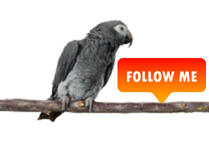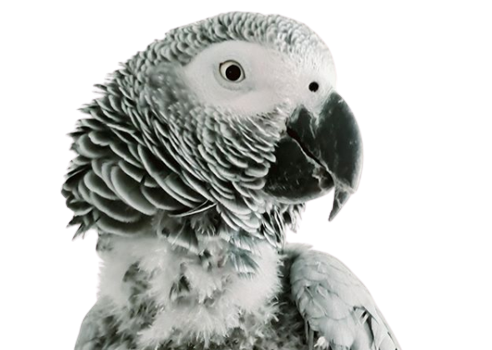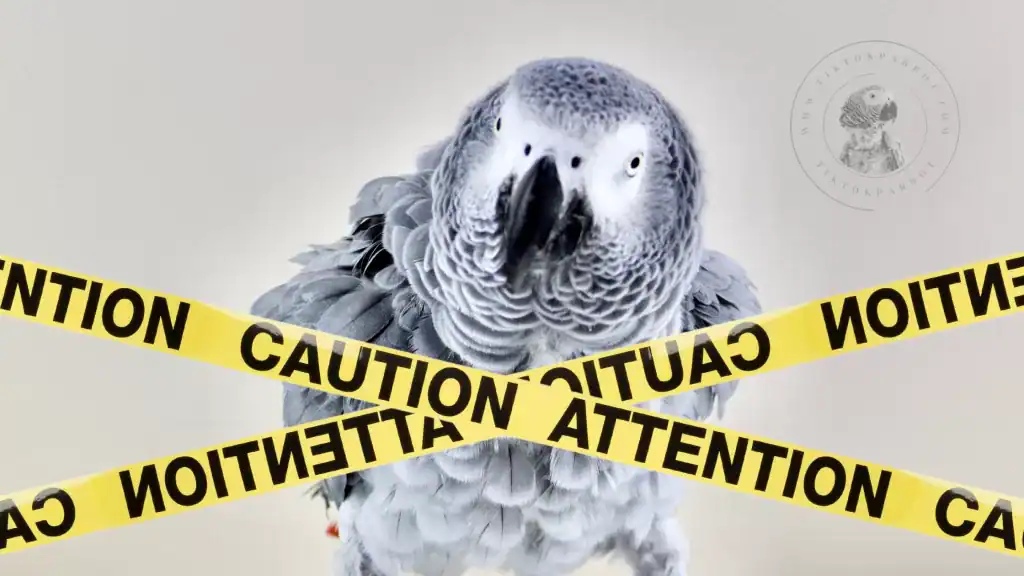My one-decade journey with my African Grey has been profoundly rewarding and educational, as a loving caretaker. Consequently, I have garnered extensive knowledge on the appropriate care and accommodations required for these magnificent birds.
Master the art of caring for your African Grey Parrot with this comprehensive guide, featuring expert insights on cage setup, grooming, nail care, and more. Ensure your pet’s happiness, health, and strong bond with you by following these proven tips and strategies. Don’t miss out on unlocking the secrets to a thriving African Grey!
African Greys possess unique environmental and developmental needs, which are often misinterpreted by their caretakers. If left unaddressed, these misunderstandings can result in early or late-life behavioral and physiological issues, such as hostility, unpredictable terror, and feather mutilation. Here are some guidelines to instill faith and assurance in your African Grey.
Prevent African Greys from Falling
I firmly believe that preventing falls is a crucial aspect in averting the multitude of issues that can plague Greys. These heavy-bodied avians often collide with their breastbones and land forcefully on their legs when they tumble. Such falls compress their chests, expelling air from their lungs, and generate pain by driving force up into their shoulders and hips.
During a fall, their (frequently over-trimmed) wing feathers might thrash against objects, resulting in injuries like splitting the skin over the breastbone or tearing the skin beneath the tail. Feather destruction often begins in these same areas for young Greys, suggesting a possible link to impact damage.
When your African Grey experiences pain and fear, it may associate these negative sensations with you, its guardian. A frightened African Grey might resort to biting or aggression and may further harm itself by attempting to flee from perceived threats, likely falling again. Addressing this self-perpetuating cycle is essential for preserving a healthy bond with your Grey.
Allow African Grey Parrots to Fledge
An important step in fostering a well-adjusted African Grey is permitting it to “break in its wings,” metaphorically speaking. If your Grey is young, avoid trimming its wing feathers immediately. Wait until it has begun to learn to fly, mastering basic maneuvers such as launching, landing smoothly, and navigating turns to reach its intended destination.
Once proficient in elementary flight, consider a light wing-feather trim. This usually involves trimming the outer five flight feathers to about half their length. With this trim, your Grey should be able to lift off without gaining altitude. As your bird matures and strengthens, further trimming may be necessary even without additional feather growth.
African Greys’ feathers are sometimes fully trimmed by groomers or veterinarians, so don’t hesitate to request a mild trim and schedule more frequent “maintenance” trims. The ultimate goal of trimming is to enable the bird to descend gently in a controlled glide over a 7- to 10-foot distance.
Improper trimming can leave sharp quill ends that chafe and irritate the bird’s side, prompting it to chew on its wing feathers or those beneath the wing, potentially leading to further feather mutilation. Request that the person trimming your bird’s feathers leave the outer edges slightly longer to ensure a smooth fit against the bird’s flank.
Monitor your Grey’s wingtips for signs of chewing after a recent wing-feather trim. Tattered, shredded tips resembling broomstick fibers may indicate a problem. If your Grey begins chewing its feathers in this manner, consult your avian veterinarian promptly to have these damaged feathers trimmed before the issue escalates. Shredded feathers can entice the bird to chew further, potentially causing infection and pain if the damage reaches the feather base.
African Greys’ Nails and Perches
By nature, African parrots, including Greys, possess sharp, needle-like talons. These nails are instrumental in their arboreal lifestyle, as they enable them to securely climb and forage amidst their flock. However, these sharp nails can be painful for owners, causing scratches and wounds.
Many individuals opt for trimming their Grey’s nails, sometimes excessively dulling them to the point where the bird struggles to grip a perch. Consequently, the parrot may become clumsy and nervous, potentially resulting in fear biting or panic attacks.
When trimming a Grey’s nails, ensure they can still perch securely without causing discomfort to you. Offer your Grey various perches with different textures and types. Natural branches, textured perches like concrete or sandy perches are excellent choices (monitor for foot irritation). Smooth-barked perches, such as manzanita, may cause the Grey to slip and fall.
Initially, position perches lower within the cage to minimize falling risks. As your Grey hones its climbing skills, elevate the perches gradually.
Avoid placing your African Grey on your shoulder, as it resembles a wide, slippery perch, which can lead to instability and falling. Instead, have your Grey perch on your hand or your lap while seated.
Addressing African Greys’ Vulnerability
African Greys often exhibit anxious behaviors, such as nail chewing, wing flipping, or constant head movements, as if searching for a safe haven. In the wild, African Greys maintain a heightened sense of alertness, often camouflaged by dense foliage.
Domesticated Greys may feel exposed if their cage is positioned near a window, so it is advisable to provide a location that allows them to observe or hide as they wish. Visual barriers or strategically placed bird toys can create hiding spots, offering your Grey a sense of security.
To help your Grey relax, remain calm, reduce activity around the cage, and speak in gentle, whispered tones.
Optimal Cage Dimensions for African Greys
Many African Greys with behavioral and feather destruction issues reside in tall cages, increasing the risk of injury from falls. Wide and deep cages, rather than tall ones, are preferable for African Greys.
Restrict your bird’s access to the top of the cage, using play stands or floor interaction instead.
Nail Biting and Feather Picking in African Greys
Displaced toenail biting behavior may contribute to feather picking in Greys. The underlying cause of this behavior is not fully understood, but it may stem from inadequate socialization in domestic environments.
Maintaining Feather Cleanliness in African Greys
African Greys utilize powder down and preen glands to keep their feathers well-groomed and soft. In captivity, dirt and oils may accumulate on their feathers. Regular bathing with clean water is essential, as is washing your hands before handling your Grey.
African Grey Vocalizations
African Greys are renowned for their ability to mimic human speech and contextualize it. Many Greys display an inherent language, utilizing specific sounds in various situations. Soft whispers, clicks, and hissing noises can help African Greys feel more at ease, especially during anxious moments or medical examinations.
If you found this blog helpful, It would be great if you could share it with your family and friends who might find it useful as well.
You might like to read these as well 🙂
The Secret Life of African Grey Parrots: What You Need to Know Before Owning One
Understanding of Grey Parrot’s Body Language
The Surprising Benefits of Owning an African Grey Parrot
Is Your African Grey a Jealous Bird? Here’s What You Need to Know!
African Grey Parrot Male or Female? (Determine Gender of African Grey)
The Mesmerizing Eyes of African Grey Parrot & What They Can Tell
African Grey Parrots: The Ultimate Guide to Care and Training
Unlock the Secrets of Choosing the Perfect African Grey Parrot
The Importance of a Cage for Your African Grey Parrot
The Battle of the Birds: African Grey Parrot vs Macaw
Winning Parrot Names: How to Choose a Name That Strengthens Your Bond
For more useful content about African grey parrots, you can subscribe my site with your email to get notification upon publishing a new blog, the subscribe box you can see on the right side of this page. Also if you get an alert on your web browser while browsing my site, allow it and that will also give you an alert whenever I publish a new blog. 🙂
Stay safe and much love !



